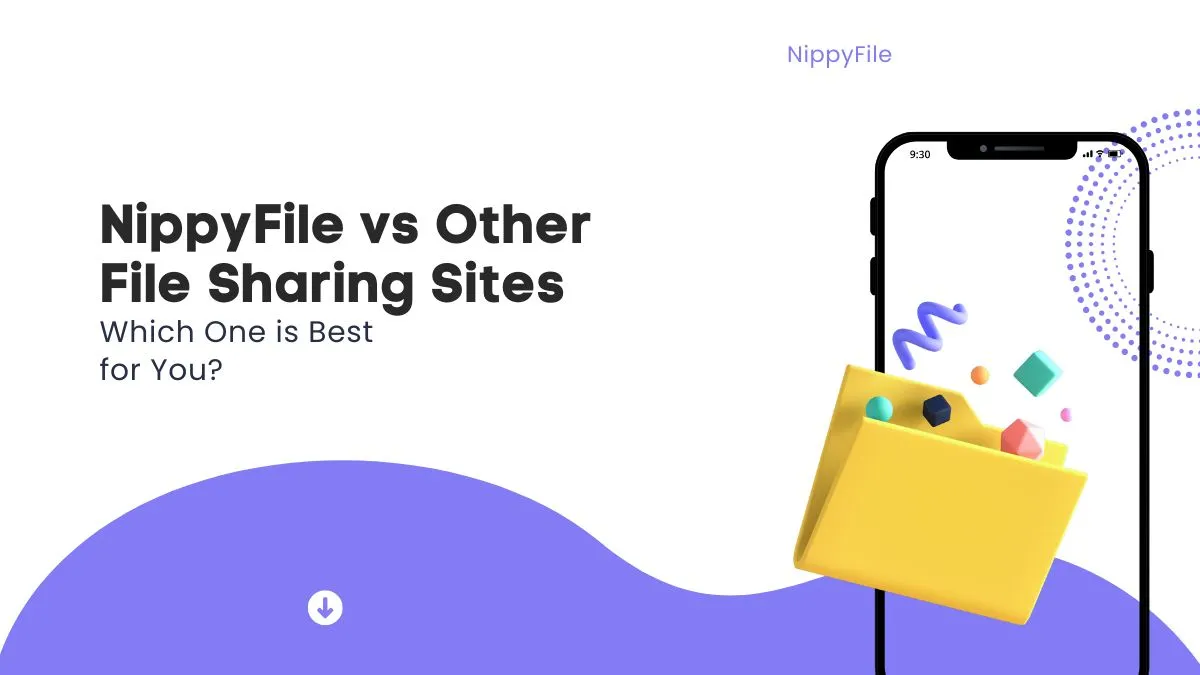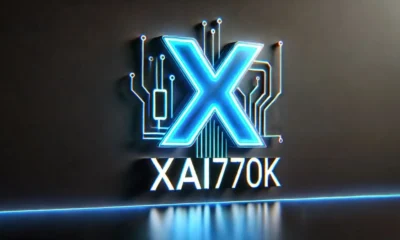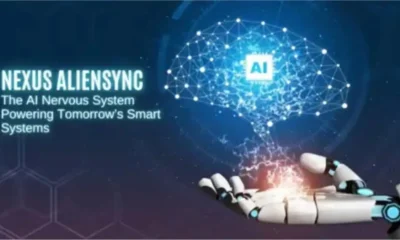TECHNOLOGY
NippyFile vs Other File Sharing Sites: Which One is Best for You?

Sharing files online has become an imperative requirement in today’s swift digital environment. The choice of file-sharing platform determines success for project submission by students, as well as document transfer for businesses, and media sharing for creatives. The vast collection of file-sharing services has created curiosity and doubt regarding NippyFile. The comparison of this sharing site with mainstream giants Google Drive and Dropbox remains under scrutiny regarding its actual capabilities. The article performs an in-depth analysis to determine which platform delivers optimal security combined with fast performance while featuring comprehensive capabilities across an intuitive interface. The search begins to discover your perfect platform solution.
What Is NippyFile?
The cloud-based sharing platform NippyFile enables seamless file uploading followed by instant download functionality. The platform enables users to distribute their materials while maintaining anonymity from registration processes. Users can achieve simple file sharing by uploading documents and then automatically generating shareable links. Users benefit from easy access through this platform, but doubts persist about how their data remains private and secure. This sharing site differentiates from storage services by exclusively serving users who need shorter-term file hosting solutions. The free platform works well for typical file sharing, but the simple design and ads may create an overcrowded interface. This site maintains its distinct position within the file-sharing field by prioritizing quick transfers through a streamlined process.
How File-Sharing Platforms Work?
Digital bridges represent the fundamental operational principle of file-sharing platforms. Files uploaded to their cloud servers become accessible by recipients through secure links and shared folders. Dropbox stands out for its sustained storage capabilities along with its collaborative features, yet this sharing site and WeTransfer excel in quick file transfer functionalities. Sharing files requires users to complete three basic steps, which include file upload, followed by link generation and final sharing steps. Each file-sharing platform manages security differently, alongside offering varying capacities for file size and permissions, while determining data maintenance durations. The mechanics of file sharing enable users to choose services customized for business, academic, or personal needs. An excellent platform should provide seamless access while ensuring adequate security measures.

Read Also: What is Torrenting and Peer-to-Peer Sharing?
Top Competitors to NippyFile in 2025
Numerous file-sharing services populate the digital world, which presents each service with distinct functional attributes. Users experience straightforward integration of Google Drive across their productivity tools. Dropbox maintains a special place in business environments due to its workflow compatibility. The user experience on WeTransfer remains simple, yet Mega.nz delivers top-level security through end-to-end encryption. MediaFire provides swift sharing, but Zippyshare excels in convenient sharing, and Send Anywhere delivers seamless file transfer across multiple devices. Among leading file-sharing services, NippyFile is an unpretentious, lightweight solution with basic functionalities. The basic version attracts users seeking a simple system without added features. Users examine service providers against each other to identify platforms that match their requirements regarding functionality, security standards, and end-user experience.
NippyFile vs Google Drive
Google Drive is the gold standard for cloud storage, offering generous space, collaborative tools, and a clean interface. It’s ideal for professionals, students, and businesses. Nippy File, in contrast, is more like a quick courier—great for temporary file sharing but lacking in permanence and tools. Google Drive requires a Google account, while NippyFile needs none. However, Drive wins in security, encryption, and long-term reliability. If you’re looking to manage multiple documents or collaborate on them, Drive is the clear winner. NippyFile works best when you simply need to send something fast, without attachments or fuss.
NippyFile vs Dropbox
Dropbox is built for professionals who value precision, organization, and real-time collaboration. Its file-syncing capabilities, team tools, and backup features make it an enterprise favorite. NippyFile, by contrast, serves users with simpler needs, like sharing a large file fast. Dropbox keeps your data safe with robust encryption, version control, and team access settings. Nippy File lacks such advanced features but doesn’t demand sign-ups or software installation. If you’re managing shared folders or backing up critical work, Dropbox is far superior. But for casual users sending non-sensitive files, NippyFile still offers an edge in speed and minimalism.
NippyFile vs WeTransfer
WeTransfer and NippyFile live in the same fast-share world but take different approaches. WeTransfer offers elegance, customization for businesses, and optional email-based tracking. It limits file size in the free version but ensures reliability and a polished user interface. Nippy File, on the other hand, is completely free and raw—no email, no branding, just instant upload and download links. If you’re a designer sending files to clients, WeTransfer’s presentation tools are unmatched. However, for spontaneous, one-off transfers where branding doesn’t matter, NippyFile provides unmatched speed without unnecessary steps.
NippyFile vs Mega.nz
Mega.nz is known for its strong emphasis on privacy. With end-to-end encryption and zero-knowledge architecture, it’s a fortress for sensitive data. NippyFile doesn’t offer the same protection layers; its focus is speed and simplicity. Mega is suitable for users who value security and storage, especially those dealing with personal or confidential files. Nippyflie trades safety for speed. There’s no encryption or long-term access, but no account hassle either. If you’re privacy-conscious, Mega is the better choice. But if you’re in a hurry and sharing a simple media file or document, Nippy File saves time—just don’t send anything sensitive.
Pricing Comparison: Free vs Paid Plans
Price often decides which file-sharing platform users choose. Nippy File is entirely free, supported by ads. There are no subscriptions or hidden charges. In contrast, platforms like Dropbox, Google Drive, and Mega offer free plans with limited space and premium plans with added storage, features, and support. WeTransfer also provides a “Pro” version with branding and file management. If you’re looking for a no-cost, barebones option for quick sharing, Nippy File wins. However, investing in a paid plan from a major provider offers long-term value for those needing professional-grade tools, higher upload limits, or secure storage.
Speed & File Size Limits
When deadlines loom, upload and download speeds matter. NippyFile prides itself on instant uploads without user login, ideal for time-sensitive sharing. However, its file size limits and occasional throttling can be frustrating. Google Drive and Dropbox allow larger files but require a login and processing time. Mega provides generous limits for free users, but it can slow down with bandwidth caps. WeTransfer strikes a middle ground—quick with decent size limits. If your priority is sending a file ASAP with no delay, NippyFile leads. For large projects or backups, mainstream platforms outperform in bandwidth, size support, and speed consistency.
Security & Privacy Features
Security should never be an afterthought. NippyFile’s ease comes at the cost of protection—it lacks encryption, password locks, and link expiration by default. Files are open to anyone with the link. In contrast, Mega uses full encryption, Dropbox allows two-factor authentication, and Google Drive lets you set view or edit permissions. WeTransfer Pro lets users expire links and set passwords. If you’re sharing sensitive documents—legal files, personal data, or company IP—NippyFile isn’t ideal. But for harmless media or temporary items, it suffices. Still, in the digital age, secure sharing platforms are worth the extra layers.
Final Verdict: Which File Sharing Site Is Best for You?
The “best” file-sharing site depends entirely on your purpose. If you need quick, anonymous transfers, NippyFile delivers without delays. But if you’re working on collaborative projects or handling sensitive data, mainstream services like Google Drive, Dropbox, or Mega are smarter choices. WeTransfer strikes a balance with its clean, friendly interface. Each tool has its strengths—NippyFile excels at simplicity, others shine in security or scalability. The ultimate answer lies in your priorities: Do you need speed or safety? Temporary or long-term use? This guide equips you with clarity so you can choose wisely and share with confidence.
-

 BIOGRAPHY7 months ago
BIOGRAPHY7 months agoBehind the Scenes with Sandra Orlow: An Exclusive Interview
-

 HOME1 year ago
HOME1 year agoDiscovering Insights: A Deep Dive into the //vital-mag.net blog
-

 HOME1 year ago
HOME1 year agoSifangds in Action: Real-Life Applications and Success Stories
-

 BIOGRAPHY1 year ago
BIOGRAPHY1 year agoThe Woman Behind the Comedian: Meet Andrew Santino Wife




























